

Álvaro Siza Vieira Corso Sempione in Milan. 2008 Corso Sempione in Milan The via Tommaso Agudio is a side-street situated half-way along the famous Corso Semplione leading to the Castello Sforzesco and north-west facing.

West 8 and Snoeck Win Competition to Redesign Het Zand Square in Bruges. The Bruges City Council has selected West 8 + Snoeck & Partners, in partnership with Atelier Roland-Jéol, as the winners of a competition to design the ‘t Zand, also known as Het Zand Square, in Bruges, Belgium.
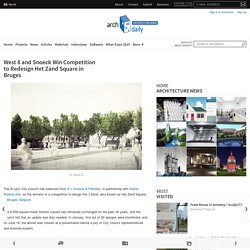
The 8,500-square-meter historic square has remained unchanged for the past 30 years, and the Council felt that an update was duly needed. In January, five out of 20 designs were shortlisted, and on June 16, the winner was chosen at a presentation before a jury of City Council representatives and external experts. The winning design relocates a central fountain to create more open space in the square, and realigns roads in order to connect it with the neighboring King Albert I Park. Bjarke Ingels Group. We have an immediate need in our BIG NYC office for an Interior Architect/Designer who is a strong and independent designer and who can take full responsibility for the design of architectural interiors.
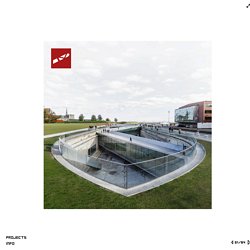
Reporting to the Project Leader Assist BIG Project Team on typical Interior Design tasks from SD-CA to develop design options for further discussion by the design team to prepare, develop & edit drawings & models relating to the design FF&E/orders experience and knowledge of brands, fabrics and materials fluent in English, spoken and written (2nd language is an asset) strong conceptual and design skills proven experience of delivering high-end fit out/interiors interest in furniture & lighting design requirement: AutoCAD, Sketch Up 3D, Rhino, Adobe Suite (Revit is an asset)
BIG Reveals 20-Year Restoration Plan for Washington DC’s Smithsonian Campus. Nearly a year-and-a-half since the announcement of their selection, BIG has unveiled plans for a massive, 20-year-long overhaul for the Smithsonian’s southern campus in the center of Washington DC.
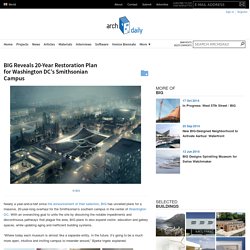
With an overarching goal to unite the site by dissolving the notable impediments and discontinuous pathways that plague the area, BIG plans to also expand visitor, education and gallery spaces, while updating aging and inefficient building systems. “Where today each museum is almost like a separate entity, in the future, it’s going to be a much more open, intuitive and inviting campus to meander around,” Bjarke Ingels explained. Projects / Rotterdam Centraal Station. Stationplein.
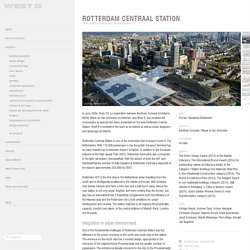
Image courtesy ProRail Stationplein. Image courtesy ProRail during the opening. image: Studio Van der Valk for Straatbeeld magazine east side of the train station is tram stations. image: Studio Van der Valk for Straatbeeld magazine looking from platform towards the west side. image: Studio Van der Valk for Straatbeeld magazine historical clock and sign are restored. image: Studio Van der Valk for Straatbeeld magazine entrace to the underground bicycle parking space. courtesy Rijksoverheid In June 2004, Team CS, a cooperation between Benthem Crouwel Architects, MVSA Meyer en Van Schooten Architecten, and West 8, has received the commission to execute the vision presented for the new Rotterdam Central Station. West 8 is involved in the team as architects as well as urban designers and landscape architects. Rotterdam Centraal Station is one of the most important transport hubs in The Netherlands.
Integration in urban environment. Interior and appearance client partners team. ArchiNed News: Aldo van Eycks playgrounds. Playgrounds by Aldo van Eyck July 15, 2002 Almost everyone who grew up in Amsterdam during the '50s, '60s and '70s is connected by an unusual fact: they once played in one of the more than 700 playgrounds in Amsterdam designed by Aldo van Eyck.
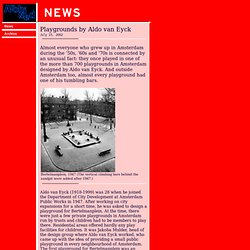
And outside Amsterdam too, almost every playground had one of his tumbling bars. Aldo van Eyck (1918-1999) was 28 when he joined the Department of City Development at Amsterdam Public Works in 1947. After working on city expansions for a short time, he was asked to design a playground for Bertelmanplein. Aldo Van Eyck. BIG, OMA, Büro-OS To Compete for New Media Campus in Berlin. Mine Museum and Archive’s Café / MACh Arquitetos. Architects: MACh Arquitetos Location: Belo Horizonte, Minas Gerais, Brasil Project Architects: Fernando Maculan, Mariza Machado Coelho Collaborators: Fernanda Amaral de Souza, Lawrence Solla Year: 2010 Photographs: Gabriel Castro Structure: Eng.
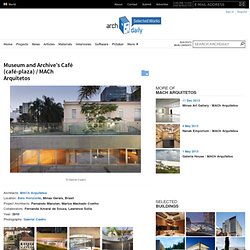
Hélio Chumbinho Climate: Eng. Carlos E. Braga de Resende Instalations: Eng. Carlos Alberto Oliveira From the architect. Superkilen / Topotek 1 + BIG + Superflex. Architects: Topotek 1 + BIG Architects + Superflex Location: Nørrebro, Copenhagen, Denmark Client: Copenhagen Municipality, Realdania Budget: 11 MIO USD Area: 30,000 sqm Year: 2012 Photographs: Iwan Baan, Hasse Ferrold, Jens Lindhe, Maria da Schio, Torben Eskerod, Mike Magnussen General descriptionSuperkilen is a half a mile long urban space wedging through one of the most ethnically diverse and socially challenged neighborhoods in Denmark.
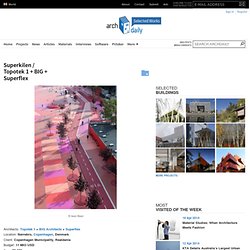
It has one overarching idea that it is conceived as a giant exhibition of urban best practice – a sort of collection of global found objects that come from 60 different nationalities of the people inhabiting the area surrounding it. Ranging from exercise gear from muscle beach LA to sewage drains from Israel, palm trees from China and neon signs from Qatar and Russia. Klong Toey Community Lantern. Hypar Pavilion / Diller Scofidio + Renfro with FXFowle. Construction is complete on Hypar Pavilion at Lincoln Center for the Performing Arts, situated on the edge of Hearst Plaza and 65th Street, the new free standing structure is the home of a new public lawn and restaurant.
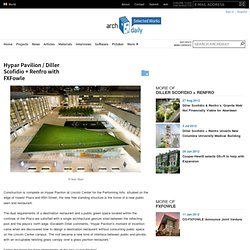
The dual requirements of a destination restaurant and a public green space located within the confines of the Plaza are satisfied with a single architectural gesture sited between the reflecting pool and the plaza’s north edge. Elizabeth Diller comments, “Hypar Pavilion’s moment of invention came when we discovered how to design a destination restaurant without consuming public space on the Lincoln Center campus. The roof became a new kind of interface between public and private, with an occupiable twisting grass canopy over a glass pavilion restaurant.”